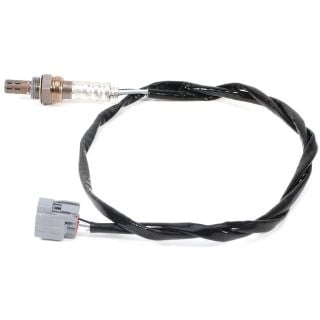How does the oxygen sensor in a car work?
The oxygen sensor, otherwise known as the O2 sensor, does what its name suggests – it measures the amount of oxygen in the exhaust. While this may sound like a relatively modest task, the O2 sensor is one of the most important sensors on any vehicle. Every new car, produced after 1980, has an oxygen sensor. The sensor is part of the emissions control system and feeds data to the engine management computer. The goal of the sensor is to help the engine run as efficiently as possible and produce as few emissions as possible.

A gasoline engine burns gasoline in the presence of oxygen. It turns out that there is a particular ratio of air and gasoline that is "perfect," and that ratio is 14.7:1. If there is less air than this perfect ratio, then there will be fuel left over after combustion. This is called a rich mixture. Rich mixtures are bad because the unburned fuel creates pollution. If there is more air than this perfect ratio, there is excess oxygen. This is called a lean mixture. A lean mixture tends to produce more nitrogen-oxide pollutants, and, in some cases, it can cause poor performance and even engine damage.
Most cars have at least two oxygen sensors located throughout the exhaust system; at least one in front of the catalytic converter and one or more downstream from the catalytic converter. The “pre-cat sensor” regulates fuel supply, while the downstream sensor measures the efficiency of the catalytic converter.The oxygen sensor can detect rich and lean mixtures. The mechanism in most sensors involves a chemical reaction that generates a voltage. The engine's computer looks at the voltage to determine if the mixture is rich or lean, and adjusts the amount of fuel entering the engine accordingly.

The reason why the engine needs the oxygen sensor is that the amount of oxygen that the engine can pull in depends on all sorts of things, such as the altitude, the temperature of the air, the temperature of the engine, the barometric pressure, the load on the engine, etc.
When the oxygen sensor fails, the computer can no longer sense the air/fuel ratio, so it ends up guessing. Your car performs poorly and uses more fuel than it needs to.
O2 sensors can typically be categorized as either a narrow-band or a wide-band sensors. A sensing element sits inside the sensor, encased in a steel housing. Oxygen molecules from the exhaust gas pass through tiny slots or holes in the sensor’s steel shell to reach the sensing element or Nernst cell. On the other side of the nerve cell, oxygen from the air outside the exhaust travels down the O2 sensor and makes contact. The difference in the amount of oxygen between that present in the outside air, and that present in the exhaust promotes the flow of oxygen ions and produces voltage.













